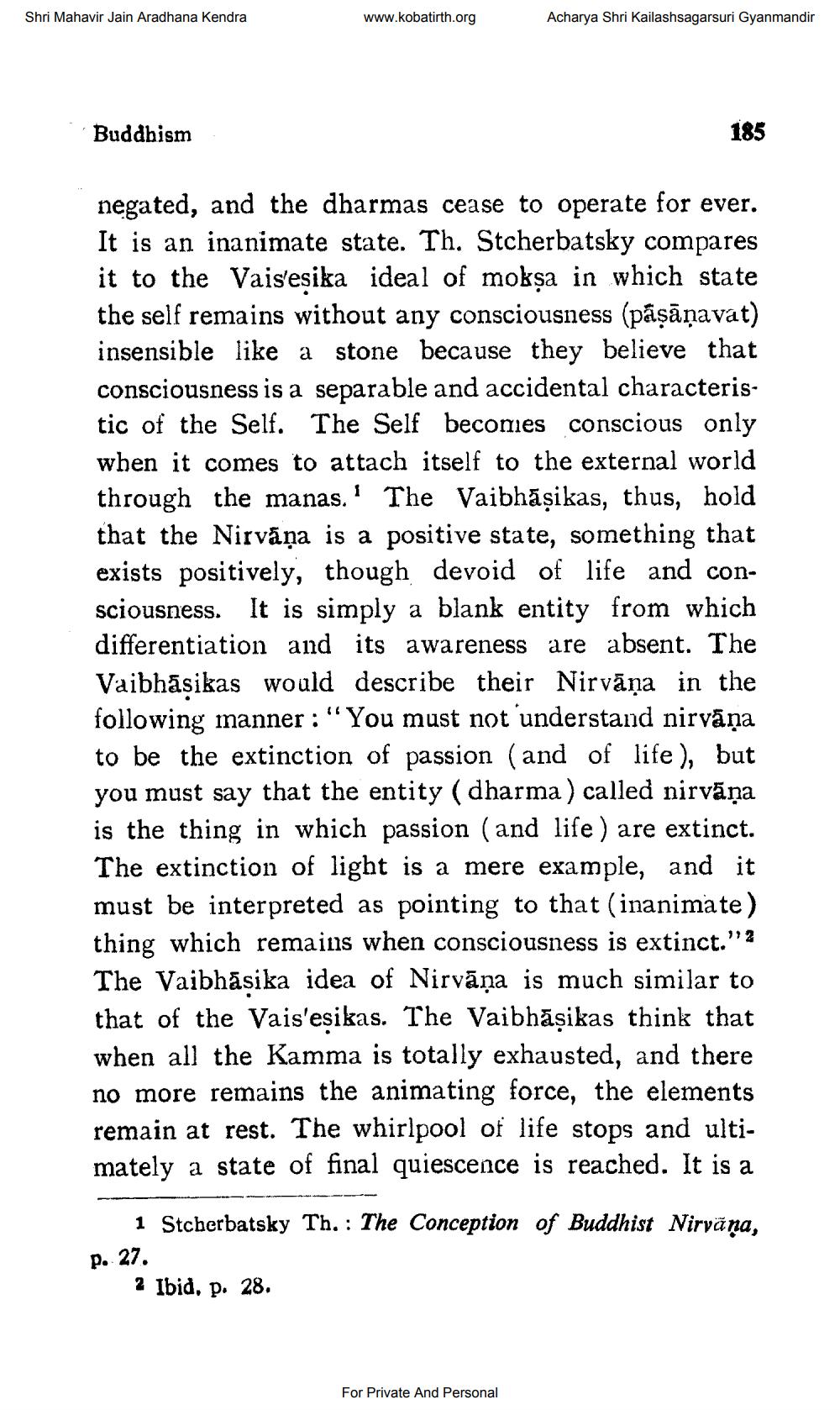________________
Shri Mahavir Jain Aradhana Kendra
Buddhism
www.kobatirth.org
Acharya Shri Kailashsagarsuri Gyanmandir
185
negated, and the dharmas cease to operate for ever. It is an inanimate state. Th. Stcherbatsky compares it to the Vais'esika ideal of mokṣa in which state the self remains without any consciousness (paṣāṇavat) insensible like a stone because they believe that consciousness is a separable and accidental characteristic of the Self. The Self becomes conscious only when it comes to attach itself to the external world through the manas. The Vaibhāṣikas, thus, hold that the Nirvana is a positive state, something that exists positively, though devoid of life and consciousness. It is simply a blank entity from which differentiation and its awareness are absent. The Vaibhāṣikas would describe their Nirvana in the following manner: "You must not understand nirvāņa to be the extinction of passion (and of life), but you must say that the entity (dharma) called nirvāņa is the thing in which passion (and life) are extinct. The extinction of light is a mere example, and it must be interpreted as pointing to that (inanimate) thing which remains when consciousness is extinct." The Vaibhāṣika idea of Nirvāņa is much similar to that of the Vais'eṣikas. The Vaibhāṣikas think that when all the Kamma is totally exhausted, and there no more remains the animating force, the elements remain at rest. The whirlpool of life stops and ultimately a state of final quiescence is reached. It is a
For Private And Personal
1 Stcherbatsky Th. The Conception of Buddhist Nirvāṇa, p. 27.
2 Ibid. p. 28.




